
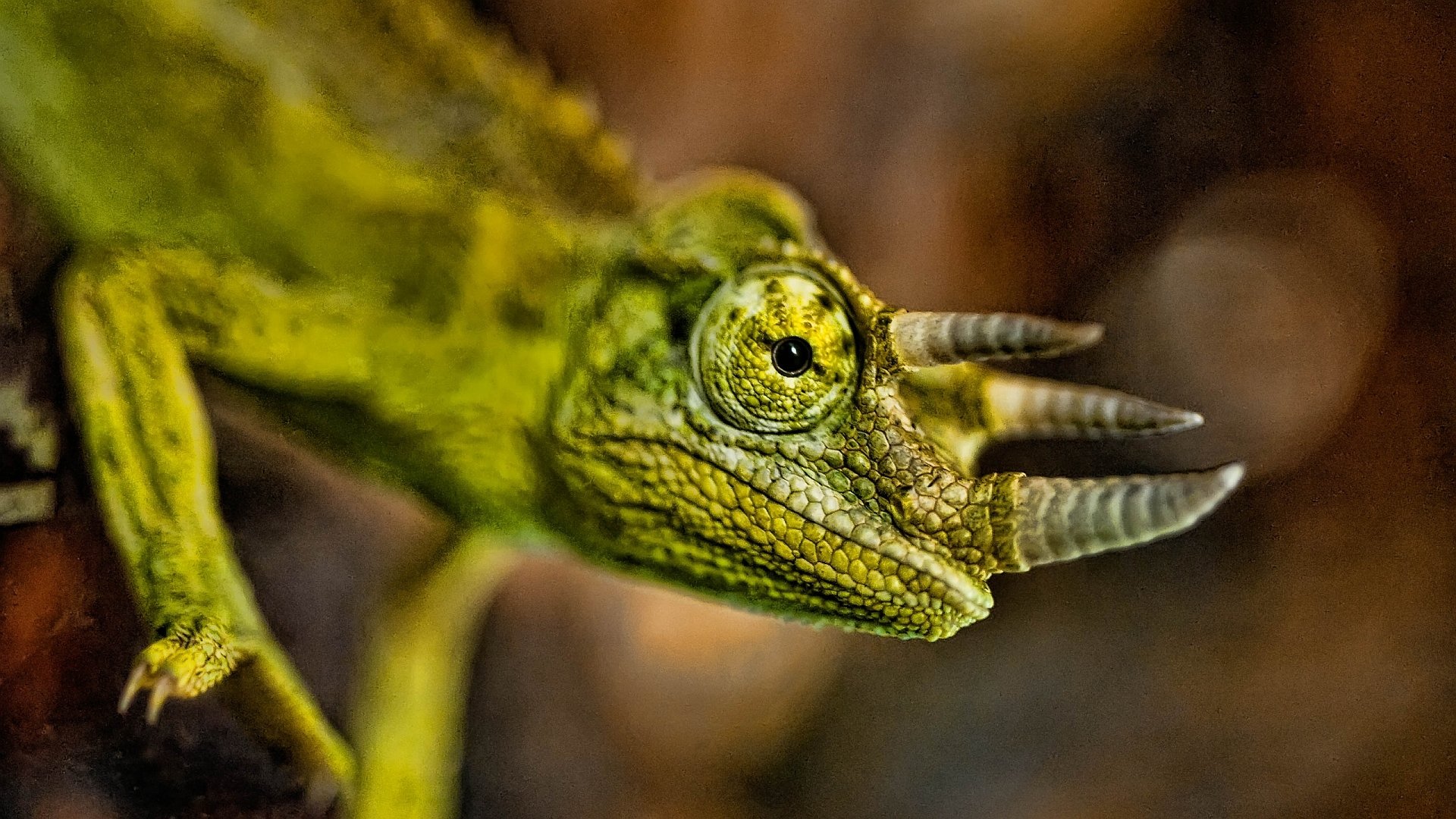

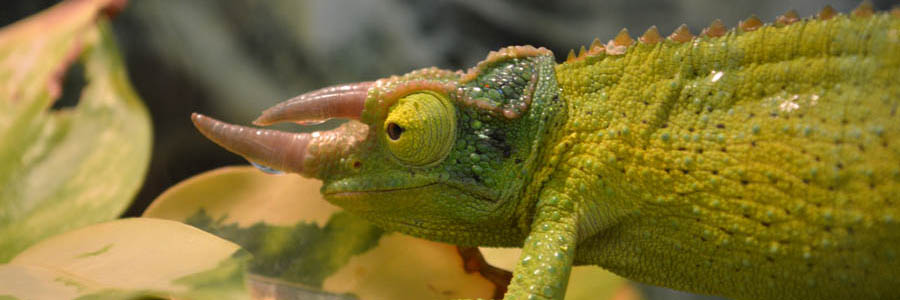
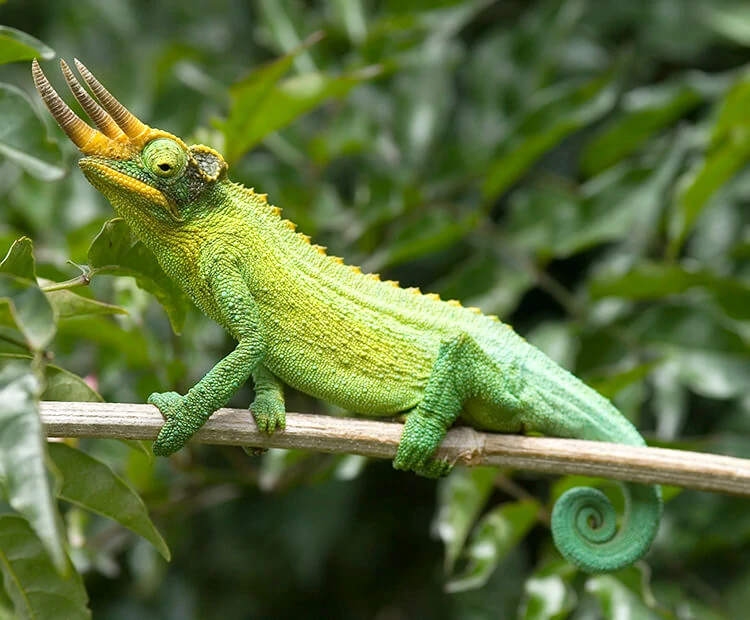
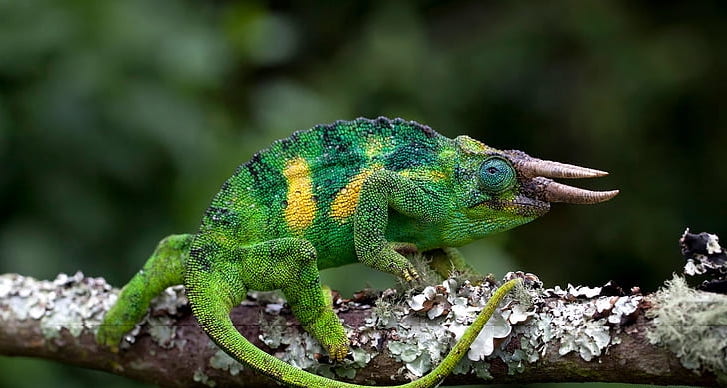
 prefer to live in mountain thickets and forests. They need cover to hide in and prefer to live in trees |
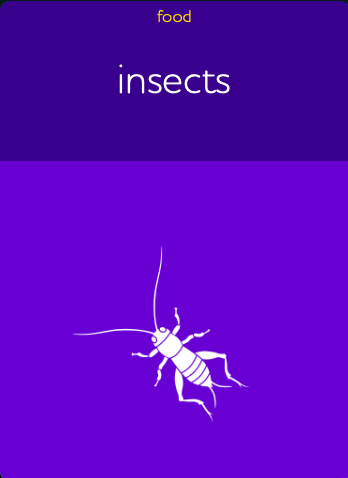 The best items to use are live gut-loaded crickets, wax worms, butter worms, cockroaches, house flies or small snails. The key is to provide a varied diet of high-quality, nutrition-loaded insects |

|
It's easy to tell a male Jackson's chameleon from a female: only the males have horns. The male's 3 horns make him look a little like a mini triceratops! Because of this fancy headgear, these lizards are sometimes called 3-horned chameleons. The horns are used to defend the male's territory. They may lock horns and try to push each other off a narrow tree branch.
These colorful chameleons live up in trees. Their prehensile tail helps them keep a grip as they crawl from branch to branch. Instead of drinking water, they lick dew from leaves.
When the Jackson's chameleon babies are born, their mother doesn't feed them. Instead, young chameleons begin hunting tiny insects as soon as they are able, with no help from Mom!